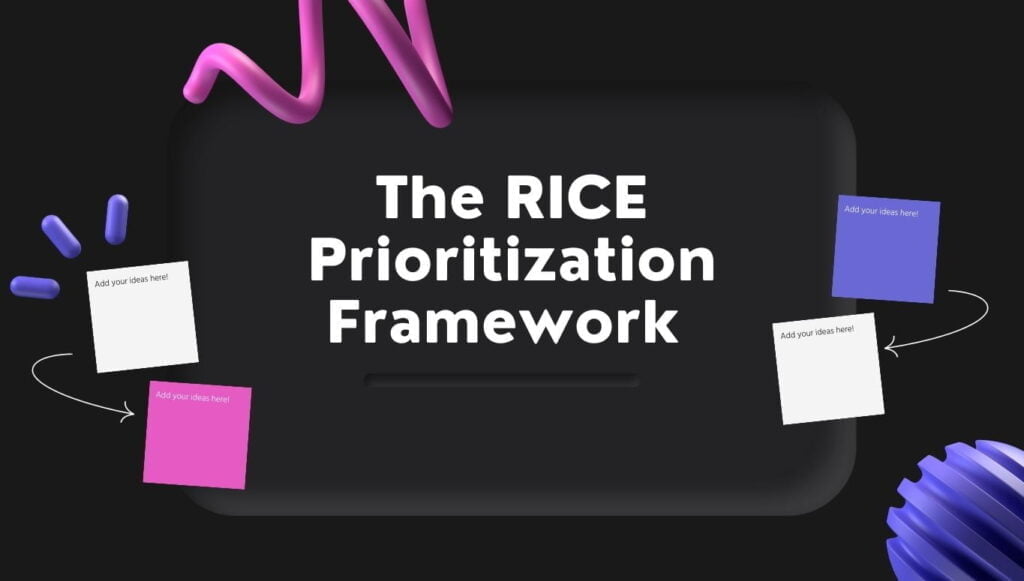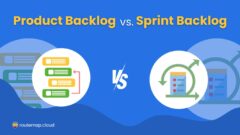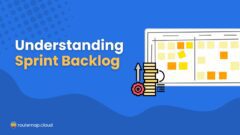Product design and development teams need to make important decisions every day. If those decisions take too much time, development and delivery end up with delays. Furthermore, if decision-making follows a different process every time, mistakes and inconsistencies are common.
Fortunately, product prioritization frameworks can change the game. These frameworks help teams make better decisions faster, so they can choose which product or elements to work on first.
The RICE Prioritization Framework is one of the most recent models, granting the flexibility and focus necessary for modern-day teams and companies. It looks at Reach, Impact, Confidence, and Effort (or RICE). These four factors help teams determine the reasons and impacts of certain decisions against others, facilitating the prioritization of product ideas, designs, features, or steps/tasks.
Let’s take a deeper look at this excellent framework, how to use it, if it suits your team, and when it might come in handy.
What is the RICE Prioritization framework?
RICE combines Reach, Impact, and Confidence and then compares the result with Effort to establish an idea’s overall weight. Then, teams compare its score with other ideas’ scores weighted through the same framework. In this way, teams can establish priority for each of their tasks.
1. Reach
Reach refers to how many consumers will use the product in a specified time period (ex. 1 month). Teams can use criteria that suit their product and current stage of development best. They could use the current number of requests, the current number of users, past transactions or downloads, or projected numbers.
2. Impact
Impact depends on your business’s success metric and your project’s objective. It may be focusing on an increase in the number of users, a boost in sales or revenues, or a reduction in service tickets. Typically, impact scores are out of 3:
- Dramatic Impact = 3
- High Impact = 2
- Normal Impact = 1
- Low Impact = .05
- Minimal Impact = .25
In some RICE models, impact scores are qualified:
- XL (Extra Large) = Dramatic Impact
- L (Large) = High Impact
- M (Medium) = Normal Impact
- S (Small) = Low Impact
- XL (Extra Small) = Minimal Impact
3. Confidence
Confidence assesses how confident the team is about their estimation for Reach and Impact. Although teams and management may be excited about a product, confidence can help bring them down to earth.
Alternatively, a team with low morale may be pleasantly surprised by their confidence level, and it will motivate or inspire the workers. Individuals (including management and key stakeholders) should evaluate if they have reliable data, testing methods, qualified workers, budget, and resources for the project. Then, they should establish a percentage out of 100:
- 100% = High Confidence
- 50% = Average Confidence
- 20% or lower = Low Confidence
4. Effort
Effort closely examines how difficult it will be to complete the project and accomplish goals. The team estimates how long it will take to finish the product. Although the calculation may be approximate, it is important to make a best guess.
The score is equal to the number of person-months (person-weeks/person-hours), or the work one member can do in a month (week/hour). In contrast to Reach, Impact, and Confidence, Effort is considered a negative. Therefore, it divides the total of those factors.
How to use the RICE Prioritization model
Once you understand the factors that go into the RICE Prioritization framework, it is relatively simple to determine and plug in the numbers. However, teams must be careful to use the same metrics for each product, feature, or task at hand. This way, they can accurately compare scores and establish priority after each calculation.
After establishing each number, the calculation is as follows: Reach multiplied by Impact multiplied by Confidence = a specific number divided by Effort = Score.
The team should carry out the calculation for each idea and then list them in order from high score to low score. A higher score showcases a higher priority because the result significantly outweighs the effort.
Is RICE the right framework for us?
Since numerous prioritization frameworks are available, you should figure out which will work best for you and your team. RICE, in particular, offers many benefits for modern-day teams, namely:
- Data-Backed: RICE takes real numbers into account. Likewise, it allows room for error in these numbers by including a confidence level. Since this is the case, management and teams can assure themselves they are making the best decisions.
- User-Focused: Product design and development should center around the user, to ensure they promote customer satisfaction. RICE’s Reach and Impact examines how it will affect the users or target audience.
- Scalability: RICE is an excellent initiative for small and large projects alike. It can work for three decisions just as well as it can work for fifty decisions because it looks at each individually and then pits the scores against each other.
- Perfect for Stakeholders: RICE provides a comprehensive picture of all the critical factors in a project. Furthermore, it quantifies and qualifies each of these factors. This is especially useful for management, investors, and other key stakeholders.
That said, it may not be right for every team. Consider the following disadvantages:
- Data Availability: In many cases, the data for Reach and Impact are limited or unavailable. Teams respond by lowering their confidence scores, which severely alters the final score. As a result, many excellent ideas may have a lower priority.
- Consistency Necessity: Teams must use the same metrics to calculate each idea, and they must plug in a number for each factor. If they fail to complete either of these steps, the final scores cannot be compared accurately.
Still, if you find the above benefits match what you are looking for, then this framework will be perfect for you and your team. Besides, you should also read more about other frameworks, like the Value vs. Effort matrix, and see if any of them satisfy your needs.
When to use the RICE Prioritization Framework
RICE is an excellent prioritization framework for when you:
- Wish to present your decisions to management, investors, or other key stakeholders
- Prefer to establish data-driven decisions
- Want to prioritize numerous ideas
- Need to make a well-rounded decision
- Have data for each factor/metric
- Do not want personal bias to slip into decision-making
- Require a flexible framework that can adapt to your unique situation or circumstances
- Want an understandable format for internal and external teams
- Have software that can perform the RICE prioritization method (cuts down on the time-consuming tasks)




